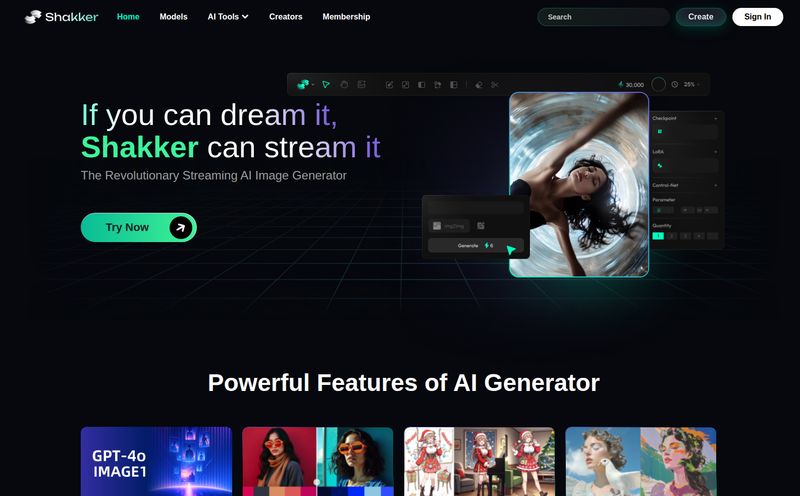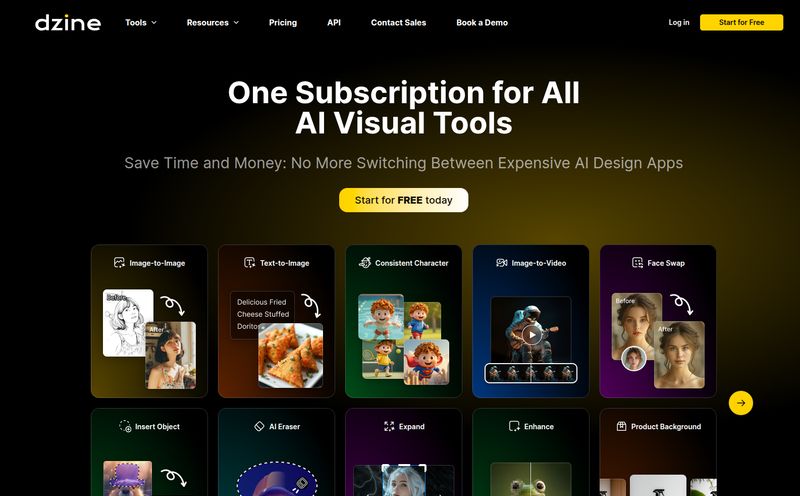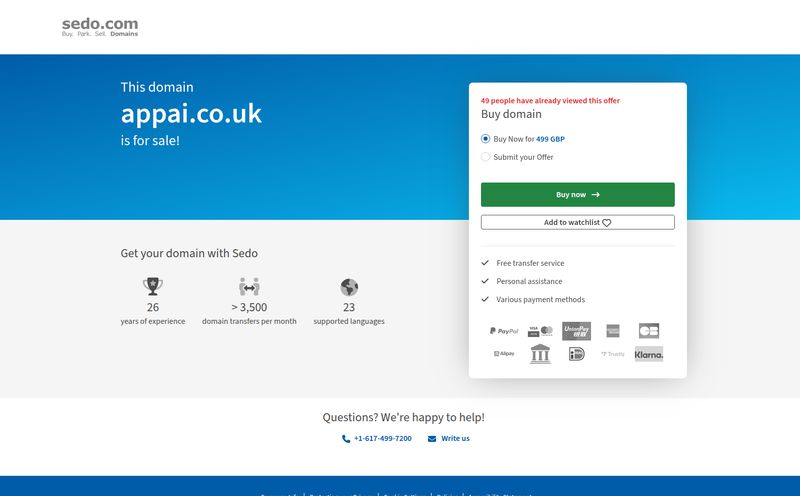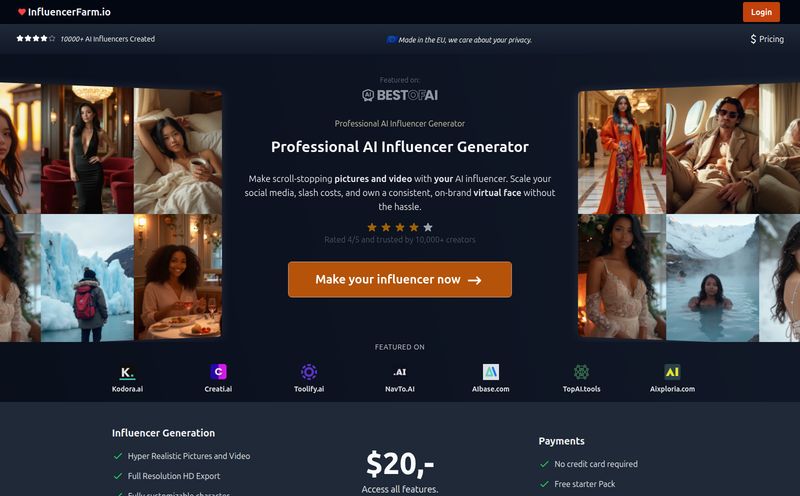We’ve all been there. It’s 11 PM, you’re trying to finish a massive project, and you need that one perfect image. You’ve scrolled through a dozen free stock photo sites, and all you’ve found are cheesy, overused pictures of people in suits high-fiving. You know the ones. It's the moment your soul starts to wither just a little bit.
And then, the name pops into your head: Getty Images.
It’s the big one. The titan. The place where the pros go. For years, Getty has been the gold standard for high-quality visual content, but it's also got a reputation for being, well, a bit intimidating on the wallet. So, is it still the undisputed champ, or just an expensive legacy brand? As someone who has spent more hours than I’d like to admit sourcing images and building traffic, I figured it was time to give it a real, honest-to-goodness look. No corporate fluff, just my two cents.
What Exactly is Getty Images Anyway?
First off, let’s clear something up. Calling Getty Images a “stock photo site” is like calling a Michelin-star restaurant a snack bar. It just doesn’t capture the scale of it. This platform is a global visual media provider. We’re talking millions upon millions of creative stock photos, sure, but also editorial shots from the latest news and sporting events, historical archives, 4K videos, and even illustrations and vectors.
Think of it less like a photo vending machine and more like a full-service creative agency's visual library. They offer everything from royalty-free images you can use pretty broadly to rights-managed photos that give you exclusive use for a period. It's a completely different league from the free-for-all sites. It's curated, it's professional, and frankly, it's beautiful.
The Good Stuff: Why People Swear by Getty
There are very good reasons why major media companies and ad agencies have Getty on speed dial. It's not just about having more photos; it’s about having the right photos.
A Library So Big You Could Get Lost
The sheer depth of the Getty library is staggering. You can search for something incredibly specific, like “a happy senior woman of Japanese descent gardening on a sunny balcony in Tokyo,” and actually get relevant, high-quality results. The authenticity is on another level. These images have emotion and tell a story, which is something I find sorely lacking in a lot of budget stock photography.
Their search function has also gotten seriously smart, with AI-powered recommendations that actually help you find what you're looking for, or even better, what you didn't know you were looking for. It saves a ton of time.
The Magic of Custom Content
Now here’s something that really sets them apart. Getty offers custom content creation. Let's say your brand needs a unique set of images that perfectly match your campaign, but you don't have an in-house production team. You can actually commission Getty’s network of photographers to create it for you. This is a total game-changer for big brands that need exclusive, on-point visuals without the logistical nightmare of a full-blown photoshoot. In my opinion, this service alone elevates them far beyond their competitors.
Tools That Actually Help Your Workflow
If you work in a team, you’ll appreciate this. Getty has these things called “Boards,” which are basically collaborative mood boards. You can gather potential images and videos, share them with your team or clients, and get feedback all in one place. It’s a simple feature, but it streamlines the creative process so much. No more endless email chains with photo attachments. Thank goodness.
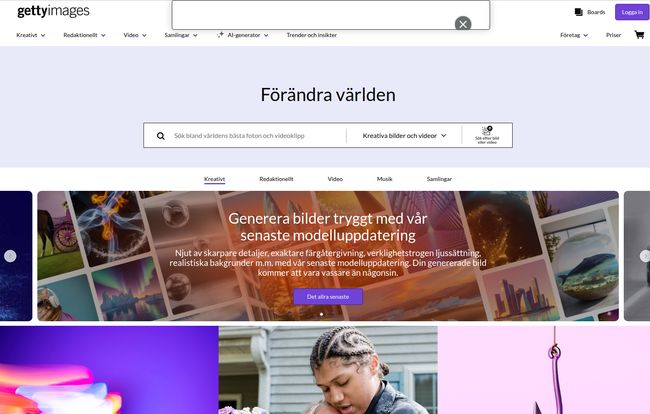
Visit Getty Images
Let's Talk About the Elephant in the Room: The Price
Okay, let’s get to it. Getty Images is not cheap. No one has ever accused them of being the budget option, and they probably never will. But expensive is relative, right? It all comes down to how you buy and what you need. Their pricing can seem a bit confusing at first glance, but it generally breaks down into two main paths.
- Premium Access (Subscriptions): This is the go-to for high-volume users. Think major publishers, advertising agencies, and large corporate marketing departments. You pay a recurring fee for access to a huge number of downloads. It’s the most cost-effective route if you need a steady stream of top-tier visuals.
- UltraPacks (Image Packs): This is the more flexible option for the rest of us. You buy a pack of downloads (images or videos) upfront, and the cost per image goes down the bigger the pack you buy. Looking at their site, you can save a decent chunk of change compared to buying a single license. It's a great middle ground if you need premium quality for a specific project but don't need a full-blown subscription.
My take? You get what you pay for. If you’re a small blogger just starting out, the price tag might be hard to justify. But if you’re a business where your brand’s visual identity directly impacts your bottom line, the cost is an investment in quality and brand safety.
The Not-So-Simple Side of Getty Images
It’s not all sunshine and perfect pictures. There are a couple of things you need to be aware of before you jump in.
Navigating the Licensing Labyrinth
Image licensing is a notoriously tricky beast, and Getty is no exception. They offer different license types, and you really need to pay attention to the terms. A royalty-free image has different usage rules than a rights-managed one. Some images, especially editorial photos of celebrities or events, may have restrictions on commercial use. The golden rule is, and always will be: read the fine print. Assuming you can use any photo for any purpose is a fast track to getting a scary letter from a lawyer.
The Cost-Benefit Analysis
Yes, the quality is superb, but you have to run the numbers. Can you achieve your goals with a more budget-friendly stock photo provider? Maybe. But will it have the same impact? Will it be as unique? Will it be legally protected? These are the questions you have to ask. For a global campaign, Getty is a no-brainer. For a local bake sale flyer... probably not.
Getty's New Frontier with AI
I noticed an “AI Generator” tab on their site, and I had to check it out. With the explosion of AI image tools, copyright and commercial safety have become a massive concern. A lot of those tools were trained on, shall we say, legally questionable data. Getty's approach seems to be the solution to that chaos. They partnered with NVIDIA to create an AI image generator trained exclusively on Getty's own vast, fully licensed library. This means that the images it creates are designed to be commercially safe. For businesses, this is a huge deal. It offers the creative potential of AI without the legal risks. I think this is a really smart move and shows they're looking toward the future of content creation.
So, Should You Use Getty Images?
After digging back into it, my feelings on Getty are clearer than ever. It’s a premium tool that delivers premium results. It’s not for everyone, and it doesn’t pretend to be.
If you're a large brand, a creative agency, a media organization, or any business where visual communication is absolutely critical, then yes. Getty Images is an incredible asset. The quality, exclusivity, and legal protection are worth the investment.
If you’re a solo entrepreneur, a small blogger, or a startup on a shoestring budget, it might be overkill. You can probably get by with other services while you grow. But keep Getty in your back pocket for when you land that big client or that crucial project. It’s the tool you bring in when you need to be certain you're going to win.
Frequently Asked Questions about Getty Images
1. Are all images on Getty Images royalty-free?
No, they are not. Getty offers both royalty-free (RF) and rights-managed (RM) licenses. Royalty-free gives you broad, perpetual usage rights for a one-time fee, while rights-managed grants specific, often exclusive, use for a set period, which can be more expensive but offers more control.
2. Can I use Getty Images for free?
Sort of. Getty has an “Embed” feature that allows you to use millions of their photos for free on non-commercial websites or blogs (like this one!). However, the image is served from their site in a frame with attribution. You can't download the file, and it's not meant for commercial purposes like advertising or promotion.
3. What makes Getty different from free stock photo sites?
It boils down to three things: curation, exclusivity, and legal protection. The quality and artistic merit are much higher because every image is vetted. You’ll find exclusive content you won't see anywhere else. Most importantly, with a proper license, you get legal indemnification, protecting you from copyright claims, which is something free sites rarely offer.
4. Is Getty Images' AI generator safe to use for commercial projects?
It's designed to be. Unlike many other AI tools, the Generative AI by Getty Images was trained on Getty’s own library of licensed content. This means they can offer the same standard commercial license and protections for the AI-generated visuals, making it one of the safest options for businesses wanting to use AI imagery.
5. How much does a single image on Getty cost?
This is the classic 'how long is a piece of string' question. The price varies wildly based on the license type (royalty-free vs. rights-managed), image size/resolution, and how you buy it. Buying a single image a la carte will be the most expensive option. Using their UltraPacks to buy in bulk provides significant savings per image.
Final Thoughts
In a world absolutely saturated with visual noise, standing out is harder than ever. Using a generic, overused stock photo is like showing up to a party in the exact same outfit as three other people. It just blends in. Getty Images is your ticket to a custom-tailored suit. It costs more, for sure, but no one will ever doubt that you came to play. It remains the king for a reason.
Reference and Sources
- Getty Images Official Website
- Getty Images Pricing and Plans
- The Verge: Getty Images’ new AI art generator
